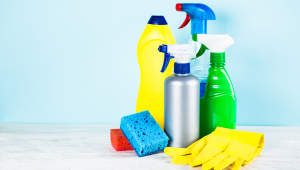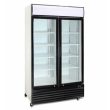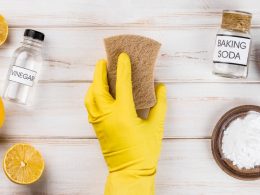Introduction:
Before we dive into the world of hygiene choices, Dr. Susan Spring. With over two decades of experience in the field of microbiology and public health, Dr. Spring is a renowned expert. Her credentials include a Ph.D. in Microbiology and a wealth of knowledge about hygiene practices, making her the perfect guide for our journey through sanitization and disinfection. fast-paced world, maintaining a clean and hygienic environment is more important than ever. As people who are already somewhat knowledgeable about hygiene, you understand the significance of keeping your surroundings free from germs and viruses. Sanitizing is the process of reducing, but not necessarily eliminating, the number of germs on surfaces. It is particularly important for objects that come into contact with food, like cutting boards, kitchen counters, and utensils. When you sanitize, you effectively reduce the risk of foodborne illnesses.
Disinfecting
Disinfection, on the other hand, goes a step further. It’s the process of killing almost all germs and viruses on surfaces, ensuring that they are no longer a threat to your health. This is crucial for frequently touched surfaces, like doorknobs, light switches, shared electronics, and bathroom fixtures. To disinfect effectively, use disinfectant sprays or wipes and follow the product instructions meticulously. Common disinfectants contain active ingredients like hydrogen peroxide, alcohol, or quaternary ammonium.
Battle Against Germs
Understanding the difference between sanitizing and disinfecting is vital for a cleaner lifestyle.
Effectiveness
- Germs Eliminated: Sanitizing reduces some germs, while disinfecting eliminates most.
- Contact Time: Sanitizing typically requires less contact time, measured in seconds to minutes, while disinfection needs more time, including drying time.
- Use for: Sanitizing is suitable for food-contact surfaces, while disinfection is recommended for high-touch surfaces.
- Products: Sanitizers and disinfectants are distinct, with different active ingredients and purposes.
Advanced Techniques
Steam Cleaning: Steam cleaning is a chemical-free, eco-friendly approach to sanitizing surfaces. By using high-temperature steam, this method effectively eliminates germs and bacteria. It’s particularly suitable for a variety of surfaces, from kitchen countertops to bathroom tiles. The power of steam lies in its ability to reach into crevices and corners that traditional cleaning methods may miss. This method is not only effective but also environmentally friendly, as it doesn’t rely on chemicals, making it a great choice for those who prefer a more natural approach to sanitation.
UV-C Light Sanitization: Ultraviolet (UV-C) sanitizing devices have gained popularity in recent years. These gadgets use ultraviolet light to kill germs and bacteria on surfaces. This method is not only efficient but also convenient and chemical-free, making it an excellent choice for those who want to avoid using disinfectants or sanitizers.

Disinfection Techniques
Electrostatic Sprayers: Electrostatic sprayers are a game-changer in the world of disinfection. They work by dispersing a fine mist of disinfectant in an even and uniform manner. This mist clings to surfaces, covering them entirely, including hard-to-reach spots and irregular surfaces. This method ensures comprehensive coverage, making it highly effective in places like gyms, schools, and offices. Electrostatic sprayers have become a staple in professional disinfection services, ensuring that every nook and cranny is thoroughly disinfected.
Hydrogen Peroxide Vapor: Hydrogen peroxide vapor is a highly specialized disinfection method often used in healthcare facilities and high-risk environments. It’s effective for large areas and complex spaces. The process involves dispersing hydrogen peroxide vapor, which effectively sterilizes the area by breaking down and destroying any harmful microorganisms. While this method is not typically practical for everyday use due to its complexity and the need for specialized equipment, it’s important to know that such advanced techniques exist, especially in environments where the highest level of disinfection is required.

KeyPoint:
| Aspect | Sanitizing | Disinfecting |
|---|---|---|
| Germs Eliminated | Some | Most |
| Contact Time | Less time (seconds-minutes) | More time (minutes-drying time) |
| Use for | Food-contact surfaces | High-touch surfaces |
| Products | Sanitizers | Disinfectants |
Conclusion:
In conclusion, understanding the nuances of sanitization and disinfection is essential for maintaining a clean and safe environment, particularly in our fast-paced and health-conscious world. Dr. Susan Spring’s expertise has shed light on the when and how of using these practices effectively, empowering lifestyle enthusiasts to make informed choices for a healthier, happier life. You grasp the fundamental difference between sanitizing and disinfecting. Sanitizing serves as a means to reduce the number of germs on surfaces, while disinfection goes a step further, eliminating almost all harmful microorganisms. Knowing when to employ these practices is key in the battle against germs. Choosing the right products is another crucial aspect. Understanding the active ingredients in sanitizers and disinfectants, as well as closely following product instructions and recommended contact times, ensures that you get the desired level of protection. Being a discerning shopper can make all the difference in safeguarding your health.








